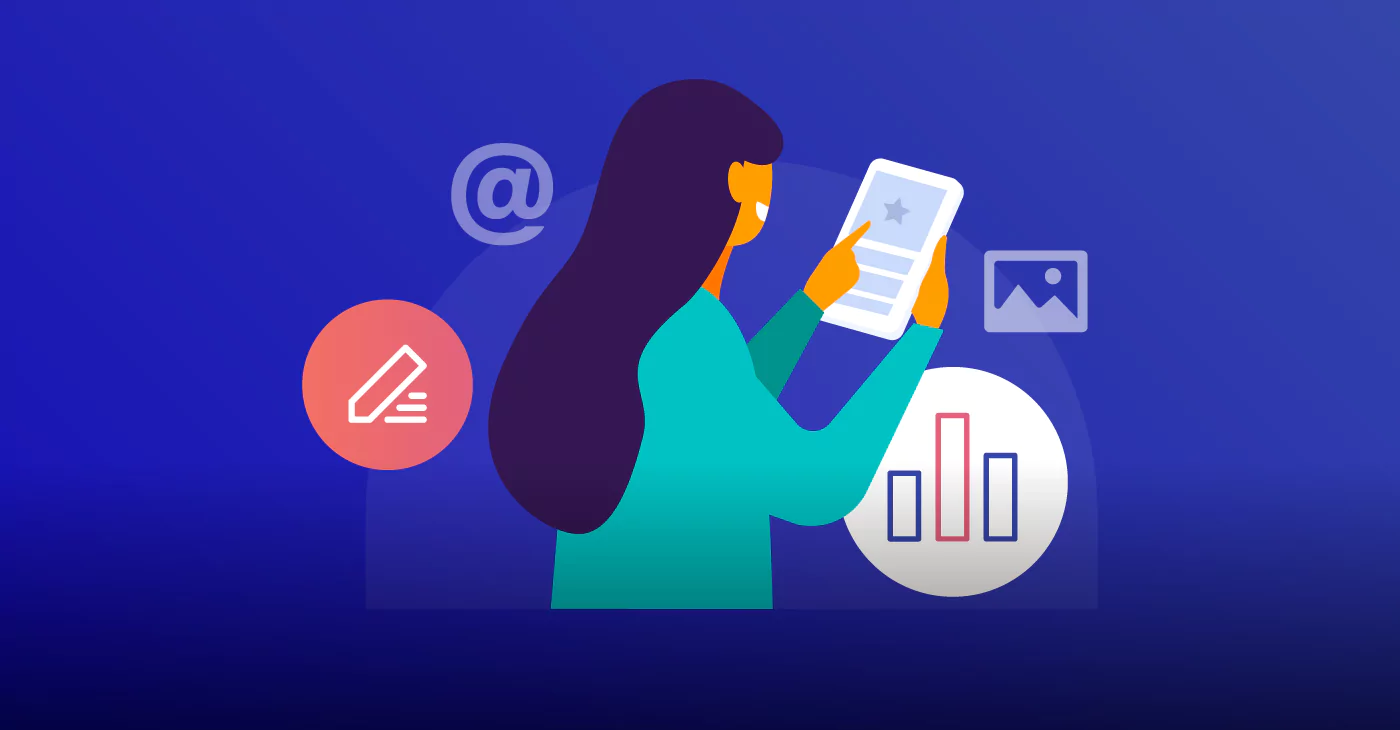
Today, most marketers rely on various marketing strategies to boost brand awareness, generate leads, and increase conversions. However, some believe that organic marketing tactics are not enough to reach a brand’s advertising goals.
Some modern brands rely on paid advertising to fill the gaps that organic advertising might leave. In this article, you will learn how to use these two tactics to get the best results for your business.
What You Need To Know About Paid and Organic Ads
Before learning the tips and tricks to successful marketing, you must understand paid and organic advertising. In this section, you will discover the similarities and differences of each concept, as well as how each can provide value.
Paid Marketing
Paid advertising is a marketing tactic involving paying various social media sites and search engines to promote brand content. These ads will be visible at the top of search results so internet users will see them first.
The most famous example of paid advertising is pay-per-click (PPC) advertising, where advertisers pay for each click their content or ad gets. The following are also common examples of paid advertising:
- Google ads
- Influencer marketing
- Remarketing adverts
- Paid social media ads
More and more marketers are investing in this strategy because it can boost visibility and exposure while offering a wider reach.
This tactic improves digital marketing results by targeting users interested in your services. With more brands in your industry turning to digital marketing, looking for people who are interested in seeing your offerings can help you stand out from the competition.
Organic Marketing
Organic marketing aims to generate traffic to your site over time without paying for anything. This strategy usually involves blog posts, guest posts, case studies, unpaid tweets, and other social media updates.
Organic marketing relies on search engine optimization (SEO), social media, and various channels to boost brand awareness.
Remember that the primary goal of this approach is to boost brand awareness and create a connection with your target audience. Some marketers try to achieve this feat by publishing educational or entertaining content. You can encourage visitors to come to your site through organic marketing and convert them into paying customers over time.
While you can use social media channels to drive organic traffic, you should consider investing in SEO. With an effective SEO tactic, you can attract the attention of people actively searching for your products or services.
Organic vs. Paid Ads: What is the Best for Your Brand?
Paid and organic ad strategies come with advantages and disadvantages. Before implementing new techniques into your content marketing campaigns, you must understand these pros and cons. After reading, you will know whether paid or organic marketing is the best choice for your business.
Pros and Cons of Paid Advertising
Pros of paid advertising
- Boosts visibility through audience targeting – With extensive audience targeting in social media, you can promote your services to anyone who comes your way. You can advertise your company in front of people based on particular demographics, interests, and locations. You can even retarget those who have engaged with and shown interest in your services.
- Grows your audience reach – As of April 2023, 5.18 billion people worldwide used the internet. Posting through Google and YouTube alone can bring you in front of countless users because of the platforms’ massive search engines. By using paid social media marketing ads, you can reach more people faster and grow your email list.
- Flexible budget – Paid social media advertisements can be a budget-friendly way to increase brand awareness. This advantage allows marketers to work with whatever pricing they can afford and reach realistic goals.
Cons of paid advertising
- Could be ignored by the audience – There is only one place where sponsored ads appear on specific social media sites. Because of the barrage of paid ads in one place, people can easily ignore your content. Getting your audience’s attention could be challenging.
- Choosing metrics or key performance indicators (KPIs) – There are various kinds of engagements on social media, including sharing, liking, and commenting. These different engagements can make it more challenging to decide which metrics to monitor.
- Choosing a platform – There are various social media platforms that paid advertisers can try. Unfortunately, it can be challenging for some marketers to select the right ones. The answer to this problem is to know where your audience spends their time. Find out where they lurk, their preferred social media sites, and what they do on these sites. Once you know these factors, you can get the most out of your paid ads.
Pros and Cons of Organic Advertising
Pros of organic advertising
- Affordable – Although organic ad campaigns can be time-consuming, they can be affordable for marketers without a considerable budget who still want to yield results. This advantage can make it an excellent option for businesses without a team to manage a paid campaign or for brands with a limited marketing budget.
- Enables direct consumer engagement – Organic social media strategies directly connect your potential customers. You can use these strategies to interact with them and learn their pain points personally. Answering questions online, responding to feedback, or sharing reviews are effective ways to communicate with consumers. It also helps build trust for your brand.
- Establishes authentic brand reputation – Organic advertising campaigns can help build a brand reputation over time. You can publish relevant and entertaining content to keep your audience’s attention. Moreover, consumers generally view organic content as trustworthy compared to paid posts, making it an effective way to build credibility and reputation. For example, you are marketing your company’s web application development services. You can publish blog posts providing tips on web development and other tricks developers can try.
Cons of organic advertising
- Limits audience reach – Unfortunately, the reach of your organic social media posts is limited to your current audience, which means you are relying on your followers to make another purchase and share your content. This limitation means less exposure and lowers your chances of reaching new potential customers.
- Less targeted promotion – Organic posts are less targeted than sponsored ads. Instead of getting to retarget consumers based on their searches or intent, you take a generic approach. You publish posts relevant to many, if not most, of your social media followers.
- Time-consuming – Waiting for your organic ad campaigns to yield results can take time. If you want a robust presence on several social platforms, you might have to wait longer since you are executing more campaigns across several channels.
These are the common pros and cons of paid and organic advertising campaigns. To know which strategy suits your brand best, check your advertising tactic and see which approach will fill the gaps. You can always combine the two techniques if you need more than an organic campaign to boost your marketing efforts.
How To Combine Paid and Organic Ads Effectively
By combining the two strategies, brands can address the gaps in organic reach. Moreover, the combination can help boost customer satisfaction, sentiment, loyalty, and engagement. This section will outline how you can effectively combine paid and organic advertising.
Use Paid Ads to Promote Your Best Organic Content
Monitor the performance of your organic content and pay to promote the ones getting the most attention. You can boost organic content on social media sites, including Instagram, Facebook, TikTok, and LinkedIn.
It is normal for specific organic posts to be more popular than others. To get the most out of your popular content, promote it using paid ads.
Try PPC and Organic Keyword Strategies on Landing Pages
If you want more creative ways to boost the return on investment (ROI) from your ad campaigns, consider using PPC and organic ad content. One example is combining your PPC and organic keyword tactics within your landing pages.
Use Paid Ad Data to Find Strong Keywords for Headlines
One practical marketing approach is to use paid ad data and determine the best keywords that you can use to write impactful headlines. Evaluate a list of relevant keywords regarding click-through rates and add them to your headlines, newsletter name ideas, and page titles. With this tactic, you can publish content that resonates more with your audience.
Monitor Your Results
While watching a marketing campaign flop may be painful, monitoring your results will help you identify areas to improve to get better results. You must review organic and paid content, collect actionable analytics, and develop reports to prove the profitability of all your campaigns.
With this strategy, you can make data-informed changes to live campaigns to get the most out of your marketing budget.
Optimize Content Using A/B testing
Today, split testing remains a crucial step many marketers skip too often. This step should be a part of your product launch checklist. As well, before you spend any money to pay for an ad, run versions of it by a smaller audience. This way, you are sure that the campaign works and will be profitable.
Test everything, including your call to action (CTA), visuals, copywriting, and ad placement to ensure success. Experiment with different audience demographics before committing to a more significant investment.
Discover How Paid and Organic Ads Can Help You Reach Your Goals
You must learn how to combine paid and organic marketing methods to reach your business goals through your ad campaigns. Regardless of your social media platform, this tactic can do wonders for improving social media marketing campaigns and building brand awareness.






